The EKWB EK-XLC Predator 240 Liquid Cooler Review
by E. Fylladitakis on December 15, 2015 9:00 AM EST- Posted in
- Cases/Cooling/PSUs
- AIO
- Water Cooling
- Liquid Cooling
- EKWB
The EKWB EK-XLC Predator 240
At first sight, the EK-XLC Predator 240 appears very similar to AIOs that we have seen and tested before. A closer look however reveals that this kit is a fully modular liquid cooling system, with the main difference being that it has been pre-assembled at the factory. The hoses are removable and there are fluid filling and air bubble draining ports. Perhaps the only thing that it has it resembling a typical AIO system is that the fluid pump is merged with the radiator.
The CPU block is relatively simple and very small compared to other AIO systems, as it has no pump on it. It is made of a Plexiglass top with a metallic cover, with a steel retention brace and a copper base. The hoses can be removed in order to add more parts or clean the block, but they need to be inserted at the same holes again. Reversing the hoses has a strong impact on performance, reducing it by nearly 20%. Note that the EK-XLC Predator 240 can only be installed on Intel LGA1150, LGA1155, LGA1156 and LGA1366 CPUs, with LGA2011 support available if extra parts are purchased. None of AMD's CPUs are currently supported.
EKWB machined the copper base of the block down to a perfect mirror finish. It is almost a shame that copper is very soft and the perfect finish will be impaired when the block gets mounted on a CPU even once. Inside the block we found a metallic flow guidance plate, forcing the fluid to enter the microchannels from the center and exit from the sides. It is very well machined, without imperfections.
EKWB suggests in the manual that the microchannels should be cleaned in order to maintain maximum performance, however we strongly advice against such action by anyone who is not a liquid cooling expert. The process requires draining the system, opening the block carefully, cleaning it with specific solvents and resealing it. A new user to such a process should be extremely careful when refilling the system, and perhaps read/watch online guides, or the user will have to deal with leaks from improper sealing.
The radiator assembly comprises most parts of the system, as it includes the fluid pump, the air flow fans and the power controls. The pump is attached to the edge of the radiator, on a plastic frame that also serves as a basic fluid tank. The height of the pump encourages the presence of two cooling fans at the top side of the radiator, and two fans are preinstalled in a pull configuration. EKWB clearly assumes that the radiator will be installed at the top of a case, pulling air out of the case. The position of the pump also prevents the radiator from being installed vertically, as the pump will be unable to circulate the fluid, especially if the system is not filled to the brim and air removed.
There are two fluid filling and air bubble draining ports on the radiator, one next to the pump and one on the other side of the metallic body. If the user wants to drain and refill the system for any reason, be it for an upgrade or maintenance, the system has to be refilled from the port on the side of the radiator, while the radiator is standing upright. Once filled, the Predator 240 has to be powered on and the port next to the pump needs to be opened, draining the air and adding fluid if necessary. Both ports require a 6 mm hex key to be opened. The user needs to be very careful and gentle when closing the port next to the pump, as the body is plastic and it can be easily destroyed by the high torque of the 6 mm tool. The other port is on the metal body and is much more robust.
There is just one issue with the radiator which users might face - the thickness. The radiator and fan assembly is 68 mm thick, which is considerably thicker than what most case manufacturers have taken into account. There are cases that are designed to hold 240 mm radiators at their top panels but do not accommodate this kind of clearance. We strongly suggest checking the clearance of the case before purchasing this unit, or make sure that the case is in the EKWB's compatibility list.
The power control board near the edge of the radiator is small, simple and very clever. It powers the fans and the pump from a single SATA power cable, getting rid of the cable mess. It gets a PWM signal from a single motherboard fan header and adjusts the speed of the fans and of the fluid pump. If no signal wire is attached, the assembly will just constantly operate at maximum speed.
What is odd about the power controller is that there is a single extra header for a third fan. As the EK-XLC Predator 240 is a dual fan radiator, the reasonable move would be to have two extra headers, in case someone wants to install two more fans for a push-pull configuration. Nevertheless, it is likely installed it there with a secondary (e.g. case) fan in mind.


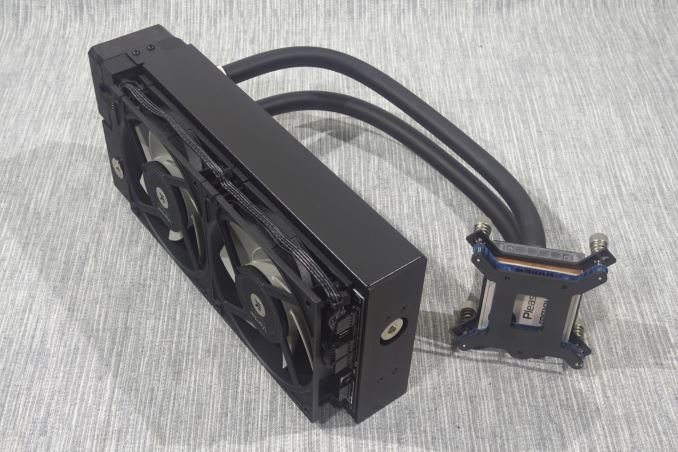

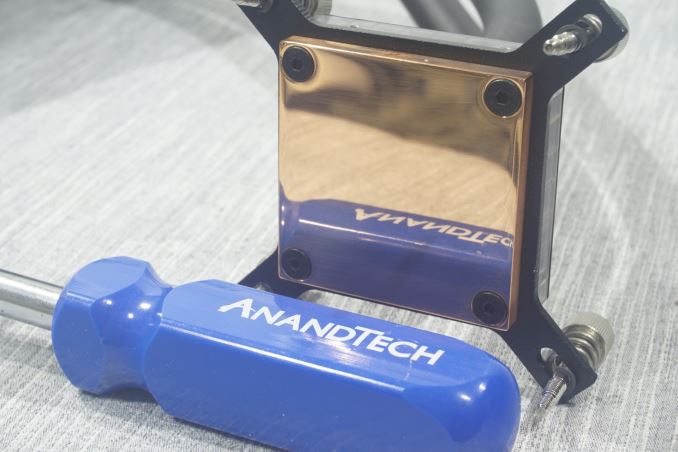
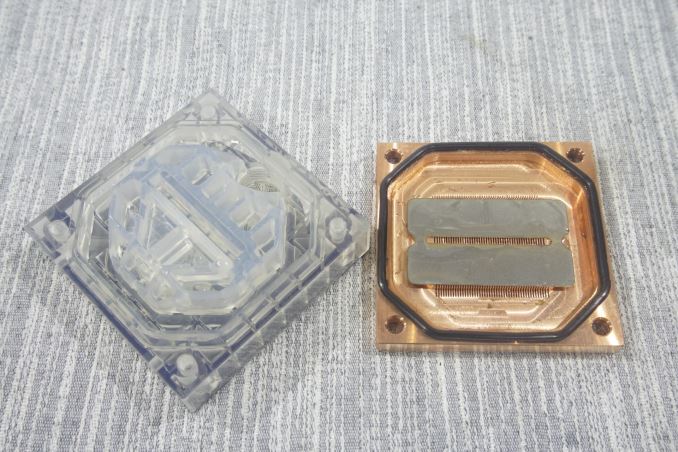
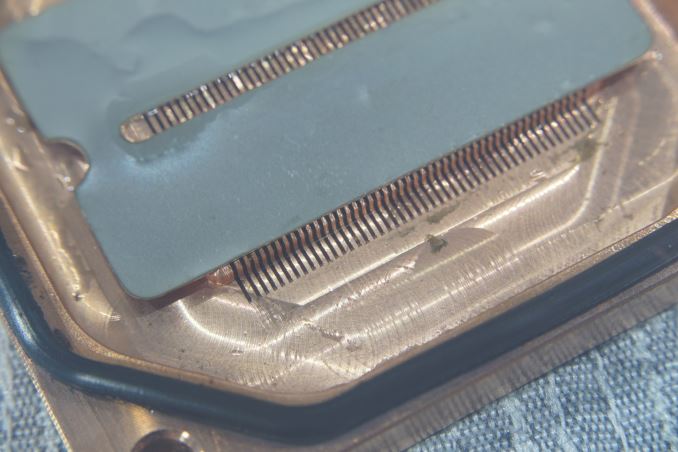

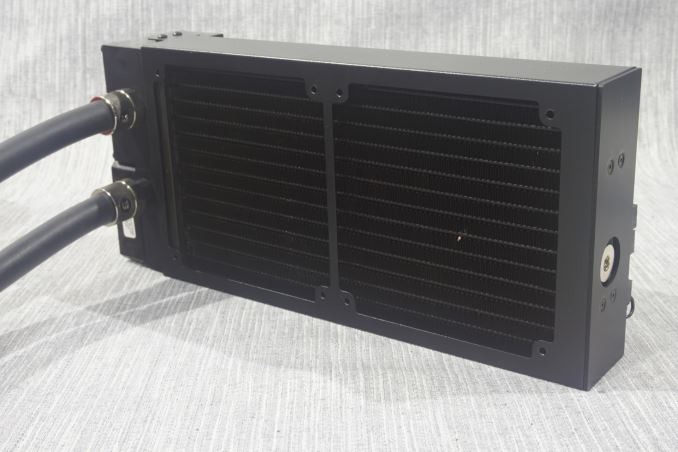

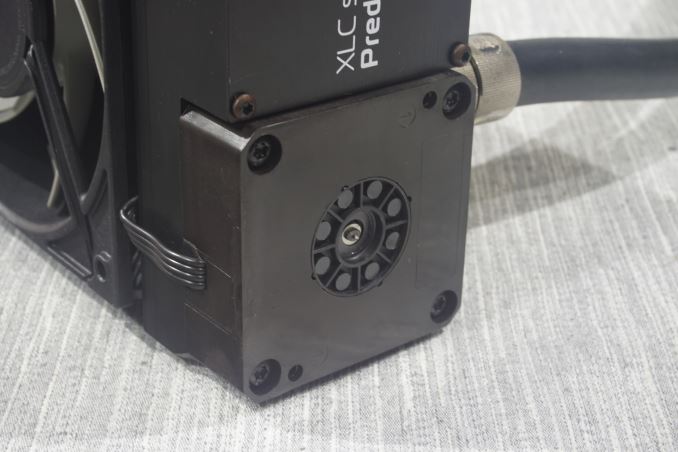









36 Comments
View All Comments
thestryker - Tuesday, December 15, 2015 - link
I greatly appreciate the review on this, and it seems to match what I've seen in other places so that's always good. Going over the little pieces is what I've come to appreciate most about AT reviews. Talking about pump noise is also helpful as it seems like the asetek/coolit ones all seem to have issues here.For me at least this cooler is worth it simply to not give money to asetek. It would be nice if AnandTech could do a quick writeup or something on which AIOs are using the asetek design, and in turn giving them license money. The patent they've been allowed to use as a weapon is pretty absurd and has put us in a sad state for AIO development.
iamkyle - Tuesday, December 15, 2015 - link
The use of a DDC was an interesting choice...Kid98 - Tuesday, December 15, 2015 - link
Every 3dB's is a doubling of power....Kid
DanNeely - Tuesday, December 15, 2015 - link
Good catch.While we're nitpicking the dB discussion though, the human ear has a log response curve; 10 dB is only heard as roughly twice as loud so the 12.3dB spread between the best and worst coolers is only a bit more than twice as loud even though the sound is roughly 17 times as intense.
Valkyrierie - Tuesday, December 15, 2015 - link
The third fan header is meant to be used in EK-XLC Predator 360.EK-XLC 240 and 360 share the same power board despite 360 having an additional 120mm fan - Most likely, they stuck to one single board for both units to cut costs.
initialised - Tuesday, December 15, 2015 - link
No mention of the DDC pump or it's specs, power consumption, flow rate...wolfemane - Tuesday, December 15, 2015 - link
I don't think power is really all that important with this kit. I'm currently using a koolance 450s running at settings for 26w @ 12v roughly doing 3.2gpm with my custom build. I did before and after power draw checks with an at wall kill-o-watt (I know it's not accurate, but it gives a general feel of whT your pulling) and I only saw a power increase of about 15w. Give or take a few watts. Flow rate is a little higher in use as well but not by much. So unless your really desperate to save on power due to over taxing a low end psu, the power draw of the pump/fans is going to be minimal on an AIO kit like this.And since the pump isn't an adjustable pump why would flow matter? It's traveling over one surface with a fairly large rad, as long as the kit is designed with decent flow and the chip is cooling, why worry about this uncontrollable spec?
With these AIO kits I'd be more concerned with how its performance stands up to competition in regards to actual cooling and noise. Power, flow, pump specs just seem irrelevant. If this was a custom built system then I could see more attention needed for these areas.
I thought it was a great review, I love EKWB and have used them since early Athlon. Nice to see a semi modifiable AIO from them. I even think the price fits the possibility seeing how there is an option for customization compared to other AIOs.
DanNeely - Wednesday, December 16, 2015 - link
I'm surprised the pump's not adjustable. I can adjust my swiftech branded DDC pump using the mobo's fan controller software; it's a bit annoying since it's RPM curve isn't linear; but I was able to tune it to run at ~2/3rds speed (at most 1 or 2 C hotter temps but much quieter operation).londiste - Wednesday, December 16, 2015 - link
https://shop.ekwb.com/ek-xlc-predator-240Pump type: Laing DDC3.1 6W
that is specific enough to find the rest of the specs.
wolfemane - Tuesday, December 15, 2015 - link
Where can we get a set of anandtech labeled tools? Would love to add those to my tech tool box!!